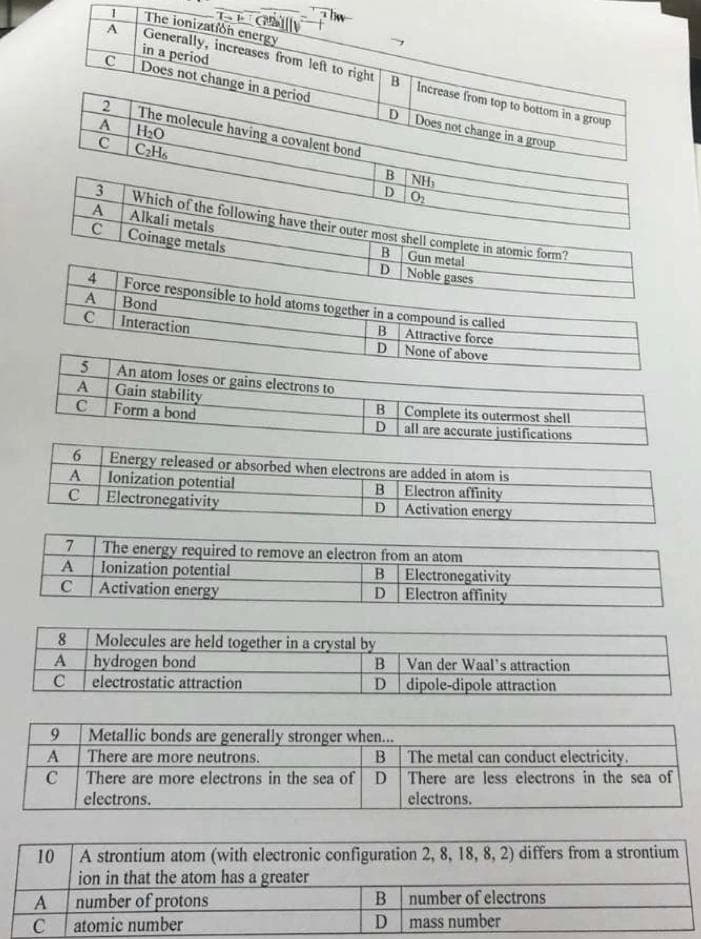The ionization energy Generally, increases from left to right| B Increase from top to bottom in a group in a period Does not change in a period Does not change in a group The molecule having a covalent bond H2O C2H6 B NH D. 3 Which of the following have their outer most shell complete in atomic form? A Alkali metals Coinage metals B. Gun metal D Noble gases 4 Force responsible to hold atoms together in a compound is called A Bond BAttractive force D None of above C Interaction An atom loses or gains electrons to Gain stability B Complete its outermost shell Form a bond all are accurate justifications D. Energy released or absorbed when electrons are added in atom is Ionization potential Electronegativity B Electron affinity D Activation energy A C B Electronegativity D Electron affinity 7. The energy required to remove an electron from an atom A Ionization potential C Activation energy Molecules are held together in a crystal by hydrogen bond electrostatic attraction B. Van der Waal's attraction D dipole-dipole attraction C Metallic bonds are generally stronger when... The metal can conduct electricity, 9. B There are less electrons in the sea of There are more electrons in the sea of D electrons. There are more neutrons. C electrons.
Formal Charges
Formal charges have an important role in organic chemistry since this concept helps us to know whether an atom in a molecule is neutral/bears a positive or negative charge. Even if some molecules are neutral, the atoms within that molecule need not be neutral atoms.
Polarity Of Water
In simple chemical terms, polarity refers to the separation of charges in a chemical species leading into formation of two polar ends which are positively charged end and negatively charged end. Polarity in any molecule occurs due to the differences in the electronegativities of the bonded atoms. Water, as we all know has two hydrogen atoms bonded to an oxygen atom. As oxygen is more electronegative than hydrogen thus, there exists polarity in the bonds which is why water is known as a polar solvent.
Valence Bond Theory Vbt
Valence bond theory (VBT) in simple terms explains how individual atomic orbitals with an unpaired electron each, come close to each other and overlap to form a molecular orbital giving a covalent bond. It gives a quantum mechanical approach to the formation of covalent bonds with the help of wavefunctions using attractive and repulsive energies when two atoms are brought from infinity to their internuclear distance.

Step by step
Solved in 2 steps









